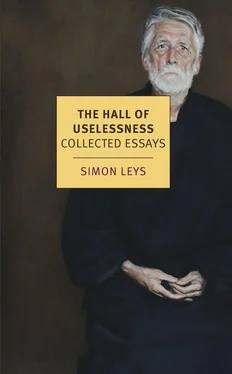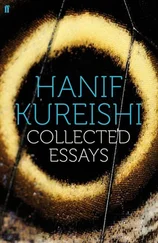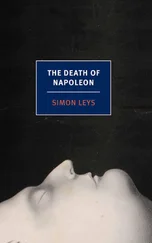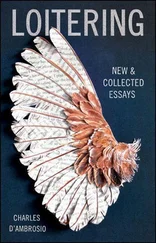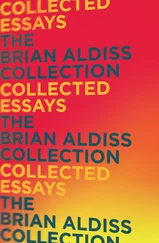The Khmer Rouge achieved complete control over all of Cambodia from 17 April 1975 (conquest of Phnom Penh by Pol Pot) until 7 January 1979 (fall of Phnom Penh, arrival of the Vietnamese army). During such a relatively short period, the regime succeeded in its grandiose project: the total destruction of society. From the outset, it had only modest means (which confirms Brandys’s formula, quoted above): the Cambodian Communist Party numbered a mere 18,000 members, who were leading an army of 85,000 men. With these cadres, the regime was able to mobilise the bulk of its forces: a huge and fearsome mass of illiterate and savage youngsters and children, fanatically indoctrinated and heavily armed, and vested with discretionary powers over the whole population. As a result, at the fall of the regime, Cambodia had lost between one-quarter and one-third of its population : a self-genocide the magnitude of which is without precedent in the history of humankind.
This program of National Communism took form from the very moment Phnom Penh was overtaken. On Pol Pot’s orders, the capital city was emptied of all its inhabitants, within three weeks. The entire urban population — including even sick patients in the hospitals — was forcibly deported on foot and thrown on the highways of the country and the tracks of the bush. Those who survived this exodus ended up reduced to the condition of slaves in crowded agricultural camps. (When the Vietnamese army eventually entered Phnom Penh three years later, they found there only seventy civilians wandering in a ghost city amidst the stench of rotting bodies.)
Having thus lobotomised the country (Phnom Penh was its very brains), the regime could more easily eliminate in the provinces all forms of administrative institution, education, public health, established religion and all other expressions of civilised life.
Symbolic gesture: in deserted and lifeless Phnom Penh, the army that had come out of the forest undertook to throw into the river all the electrical and mechanical appliances they could grab from the city shops, offices and private residences — in a word, all the equipment of modern life. (Note that, outside the capital city, nine-tenths of Cambodia was without electricity.) This anti-modern frenzy did not even spare the motorbikes of the local Harley-Davidson club: the fact that these machines were in perfect working condition and the bush cruelly lacked motorised transportation could not save them from this watery ending. Another thing that attracted the virulent hostility of the Khmer Rouge: people wearing glasses. Spectacles were to be confiscated and destroyed on the spot, and their owners arrested and sent to labour camps to await eventual execution, on the suspicion that they were educated and therefore belonged to the oppressor class. (By the way, Son Sen — the chief enforcer of the regime — himself wore glasses; he was eventually murdered by his own comrades in 1997, but not for that reason.)
This wild delirium originated from the top; Pol Pot’s rare declarations betrayed his complete divorce from reality. He was praising the splendid progress of the country, the development of industrial and agricultural production, of economy, of education and culture, at the very moment when that part of the population which had temporarily escaped massacre was tottering on the edge of starvation in a state of primeval deprivation — schools had been destroyed, commerce had vanished, money had been abolished and, in the bush, some executioners practised cannibalism.
The total inversion of reality that was expressed in the leader’s speeches was not part of a propaganda effort — it reflected Pol Pot’s actual and sincere beliefs; and these beliefs, in turn, proved contagious, since neither his Chinese allies nor his Vietnamese enemies were ever able to perceive the imminence of his downfall. Having laid the country to waste and turned the population into deaf and mute beasts of burden, the ruling clique started to self-destruct by indulging in demented purges. And then, in this situation of instability and weakness, Pol Pot chose to launch border attacks against the Vietnamese enemy. Reacting to these insane provocations, the Vietnamese army, five times superior in strength, entered Phnom Penh after a Blitzkrieg whose swiftness and ease took everyone by surprise, including the invaders themselves.
Yet, after this complete and final collapse of their actual power, the Khmer Rouge did not vanish entirely. In order to counter an imaginary Soviet — Vietnamese menace (allegedly bent on subverting all South-East Asia), an improbable Sino — American alliance enabled the Khmer Rouge to survive artificially under two forms: in a few pockets of jungle on the Thai border, as smugglers and traffickers of rubies and precious timber; and in New York, as official representatives to the United Nations of a non-existent “Democratic Kampuchea.” Thus, for another dozen years, the votes of the murderers carried in the General Assembly as much weight as the votes of — let us say — Germany and Japan, and more weight than the Vatican. (After the fall of Saigon in 1975, Kissinger asked the foreign affairs minister of Thailand to convey to Pol Pot the friendly wishes of the American people, adding for his interlocutor’s benefit: “Of course, these people are murderous thugs, but this should not affect our good relations.” The administration of Jimmy Carter — under the influence of Brzezinski, and notwithstanding the rhetorical emphasis which the president himself placed on human rights — pursued essentially the same line.)
If, in the long run, the extreme irrationality of the Pol Pot regime condemned it to disintegration, the recipe which ensured its absolute authority in the short term can be described in a single word: terror.
Regarding the system of terror established by the Khmer Rouge, we are rather well informed. At the highest level, the main centre for organised torture and death in Phnom Penh, the prison of Tuol Sleng, kept voluminous, detailed and meticulous archives. Its director, the chief torturer Duch, is also well known: on this subject, we already have the invaluable testimony of the French orientalist scholar François Bizot, who, before the Khmer Rouge came to power, was Duch’s prisoner in the forest for several months in 1971. To Bizot’s earlier report, first published in French in 2000 and later in English as The Gate , should now be added the statements and confessions which Duch himself has made since his arrest in 1999.
All the prisoners sent to Tuol Sleng were destined to be executed (of the 15,000 inmates that were successively processed in the prison during its three years of activity, there were only fourteen survivors). The task of the centre was to extract from these people confessions that would retrospectively justify their arrest and provide evidence and names for further arrests. They were not arrested because they were guilty: they were guilty because they were arrested. Guilty of what? Their confessions would tell. Quite often, their transfer was accompanied with instructions regarding the sort of crime to which they should confess, and then torture ensured that an adequate confession was obtained. For the accused person, the final outcome was already decided; only one thing still depended upon his own choice: the length of his suffering under torture. The only way of shortening this was to produce a confession with names of accomplices, as suggested by the interrogator. All this senseless rubbish was minutely collected and stored in files — with some confessions being 100 pages long!
At the very beginning, Tuol Sleng still dealt with genuine enemies: former collaborators of the inept pro-American regime of Lon Nol. Very soon, however, such customers became scarce and, by the second year (1976), inner purges of the Khmer Rouge movement began to occupy all the attention and energy of interrogators and executioners. Eventually, during its last months of activity, the prison began to devour its own jailers!
Читать дальше
